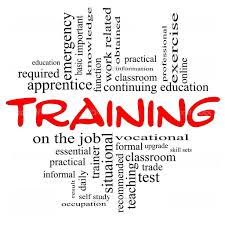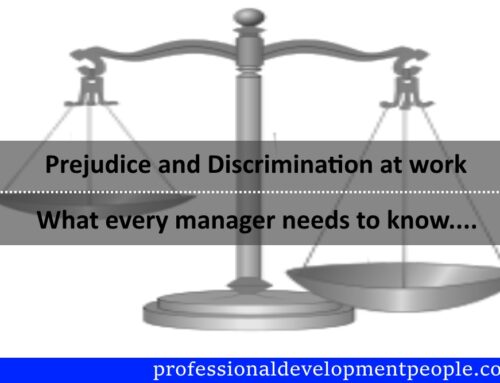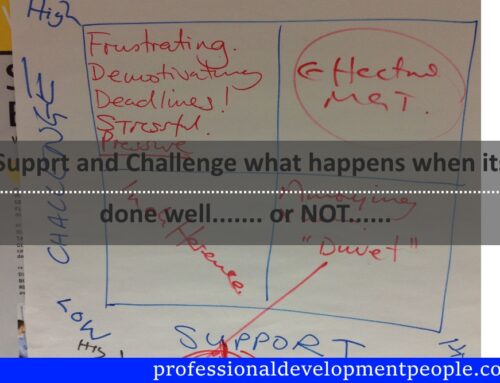Many organisations we work with have a wide range of support available to their managers. Yet still have problems with work based relationships. Their managers try to manage, but fall foul of mistakes that can easily be avoided. So how can they bring policies and procedures to life? Why should they? Bringing policies and procedures to life allows managers to resource their staff, and workers to get on with their work without distractions.
Here is a model that we have developed at PDP. It is getting really good results with managers in G4S a FTSE 100 company.
Bring policies and procedures to life – Consultation
- Hold a full and frank meeting with the client. Explore the needs and wants they have. Look at the current provision that exists to help
 bring policies and procedures to life. Have a focused discussion on the outcomes required and the preferred method of delivering that outcome.
bring policies and procedures to life. Have a focused discussion on the outcomes required and the preferred method of delivering that outcome. - Agree what must be in the training and what is up for negotiation. Is it about the outcome or the methodology? The outcome is to bring the policies and procedures to life. The previous methodology was to use two days of meticulously prepared powerpoint slides delivered by great HR specialists. Could it be that the outcome may be better achieved using specialist educators and engaging activities?
- Cool thinking and planning period.
- Return to the client with a proposal to address the topics raised in stages 1 and 2.
- Pilot the proposal with a mixed group of real managers
- Use the pilot data and feedback to tweak the programme
- Diarise the delivery
- Evaluate and review the programme and it’s effectiveness on managers behaviours in the business
The Design.
How “bringing policies and procedures to life” comes to life!
 After client consultation, they chose our bespoke two day training programme, replacing their previous one which had been delivered by the in-house HR specialists. We managed to reduce the powerpoint reliance from 148 slides to NONE. We used several of the brilliant case studies generated in-house and repositioned them to have greater impact.
After client consultation, they chose our bespoke two day training programme, replacing their previous one which had been delivered by the in-house HR specialists. We managed to reduce the powerpoint reliance from 148 slides to NONE. We used several of the brilliant case studies generated in-house and repositioned them to have greater impact.
Housekeeping
Course beginnings, welcomes and objectives
Hearts and Minds
“The Grab” – Spheres of Influence, My responsibilities and duties, “Professional” attributes and behaviours. Behavioural Contract (see Previous Blog)
Personal values, professional values, conflicts and synergies. Understanding attitudes and behaviours (see our blog on Behaviours), the importance of Allports paradigm.
Policies and Procedures – Top Level
The Legal, Moral and Business case.
Recognising and understanding partnerships between Trades Unions and organisations. Why the unions and business share the desire for excellent work place behaviours and systems. Memoranda of Agreement.
Policies and Procedures – the vast array – taster session
Deciphering the difference between a policy and a procedure.
Exposure to a wide range of these, each delegate receives a policy and procedure to investigate and explain to the rest of the group. We deliberately chose a wide range of policies ranging from “time off for public duties” to “paternity leave”.
Policies and procedures – Specific Issues
The Master Class. Delegates placed into three groups and given the biggest issues for managers in the organisation. (As I am sure you understand those are confidential to our client!). Groups self select their chosen area, depending on the manager’s perceived need. Teams spend a chunk of time discussing the policy, exploring the procedure and then presenting it back to the group as a whole. The presentations MUST be jargon free, showing charts, key times, rationale, potential pit falls and appeal details.
Case studies – Learning into practice
Suspension of a colleague – Who can, why they might, when they should.
Three scenarios from the last year. What would you do? debrief in plenary
The Equalities Act 2010
Protected Characteristics – what they are.
How people are disadvantaged – Direct discrimination, indirect discrimination, discrimination by association, discrimination by perception, harassment, harassment by a third party, victimisation. Clearing the mist and explaining these in pertinent accessible ways.
Harassment at work
Case studies using the above, from real situations. As a manager what must you do? Individual work with group plenary.
Transition
So What? Trainer led discussion to identify specific actions from each delegate, time scales and willingness.
Closing Remarks.
The delegates loved the course.
It is starting to become the “must” attend event, waiting lists are growing and more events are diarised.
Contact Richard or Paula via the website if this approach is interesting to you and your business.





